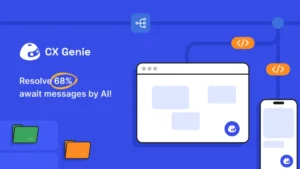The digital age has revolutionized the way we create, share, and consume products. Digital products, which are intangible assets or media distributed online, have become increasingly popular for both creators and consumers. This comprehensive guide will explore what digital products are, the benefits they offer, various types, how to create and sell them, and tips for success.
What are Digital Products?
Digital products are non-physical items that can be created, distributed, and consumed entirely online. Unlike physical goods, digital products don’t require inventory, shipping, or storage, making them an attractive option for entrepreneurs and businesses. Examples include e-books, software, online courses, music, and digital art.
Benefits of Digital Products
1. Low Overhead Costs
Creating and selling digital products typically involves minimal overhead costs. There’s no need for manufacturing, warehousing, or shipping. Once the initial product is created, it can be sold repeatedly without additional production costs.
2. Scalability
Digital products are highly scalable. Whether you sell one copy or one million, the cost of distribution remains virtually the same. This scalability makes it easier to reach a global audience and maximize profits.
3. Instant Delivery
Digital products can be delivered instantly. This immediacy satisfies customer demand for quick access and enhances the overall purchasing experience.
4. Passive Income Potential
Digital products can generate passive income. Once created and marketed, they can continue to sell and bring in revenue with little to no ongoing effort.
5. Flexibility and Customization
Digital products can be easily updated and customized. Creators can continually improve their products based on customer feedback and changing market trends.
Types of Digital Products
1. E-books and Written Content
E-books, guides, and articles are popular digital products. They cater to a wide range of interests and can be easily distributed through platforms like Amazon Kindle, Apple Books, and personal websites.
2. Online Courses and Workshops
Educational content, including online courses and workshops, has seen a surge in demand. Platforms like Udemy, Teachable, and Coursera allow creators to share their expertise and teach others on various subjects.
3. Software and Apps
Software and applications are essential digital products. They include productivity tools, games, mobile apps, and SaaS (Software as a Service) solutions. Distribution channels like the Apple App Store and Google Play make it easy to reach millions of users.
4. Digital Art and Graphics
Digital art, graphics, and design templates are valuable resources for other creators. Marketplaces like Etsy, Creative Market, and Adobe Stock provide platforms for artists to sell their work.
5. Music and Audio Files
Musicians and audio creators can sell their work online. This includes music tracks, sound effects, audiobooks, and podcasts. Services like Spotify, iTunes, and SoundCloud offer distribution and monetization options.
6. Membership Sites and Subscriptions
Membership sites and subscription services provide ongoing value to customers in exchange for a recurring fee. This model is common in industries like fitness, education, and entertainment.
Creating Digital Products
1. Identify Your Niche and Audience
Before creating a digital product, identify your niche and target audience. Research market demand and understand the problems or needs your product will address. This foundation is crucial for developing a product that resonates with potential customers.
2. Plan and Develop Your Product
Once you have a clear idea, outline the content and structure of your product. Create a detailed plan that includes all necessary components. Use appropriate tools and software to develop your product. For instance:
- E-books: Use word processors like Microsoft Word or Google Docs and design tools like Adobe InDesign.
- Online Courses: Use course creation platforms like Teachable, Thinkific, or Kajabi.
- Software: Use programming languages and development tools suitable for your project.
3. Test and Refine
Before launching, test your product thoroughly. Gather feedback from beta testers or a small group of trusted individuals. Use their input to refine and improve your product.
Selling Digital Products
1. Choose the Right Platform
Select a platform that aligns with your product type and target audience. Consider factors like fees, user interface, and audience reach. Popular options include:
- E-books: Amazon Kindle Direct Publishing (KDP), Apple Books.
- Online Courses: Udemy, Teachable, Coursera.
- Software: Apple App Store, Google Play, direct sales from your website.
- Digital Art: Etsy, Creative Market, Adobe Stock.
2. Set the Right Price
Pricing digital products can be challenging. Research competitors and understand your audience’s willingness to pay. Consider offering tiered pricing or bundling products to provide more value.
3. Create a Sales Page
A compelling sales page is essential for converting visitors into buyers. Highlight the benefits and features of your product, include testimonials or reviews, and use persuasive copywriting. High-quality visuals and clear calls-to-action (CTAs) are also crucial.
4. Market Your Product
Effective marketing is key to driving sales. Use a combination of strategies to reach your audience:
- Content Marketing: Create valuable content related to your product and share it on blogs, social media, and video platforms.
- Email Marketing: Build an email list and nurture relationships with potential customers through regular, informative emails.
- Social Media: Leverage platforms like Facebook, Instagram, Twitter, and LinkedIn to promote your product.
- Paid Advertising: Use Google Ads, Facebook Ads, and other paid advertising channels to reach a broader audience.
Tips for Success
1. Focus on Quality
Ensure your digital product is of high quality. Invest time in research, development, and presentation. A high-quality product leads to satisfied customers and positive reviews, driving more sales.
2. Build a Strong Brand
A strong brand enhances credibility and trust. Consistently use your brand’s voice, colors, and visuals across all platforms. Engage with your audience and build a loyal community around your brand.
3. Provide Excellent Customer Support
Offer prompt and helpful customer support. Address inquiries and resolve issues quickly. Excellent customer service can lead to repeat sales and positive word-of-mouth.
4. Continually Improve and Update
Digital products can be easily updated. Listen to customer feedback and make necessary improvements. Regular updates keep your product relevant and valuable.
5. Protect Your Intellectual Property
Ensure your digital products are protected from unauthorized distribution. Use digital rights management (DRM) tools and watermarking for digital art. Clearly state your terms of use and copyright information.
Conclusion
Digital products offer immense potential for entrepreneurs and businesses. With low overhead costs, scalability, and the ability to generate passive income, they are an attractive option in the digital economy. By understanding the types of digital products, creating high-quality content, and effectively marketing your offerings, you can build a successful digital product business. Embrace the opportunities of the digital age and start creating today!








